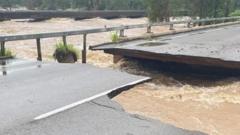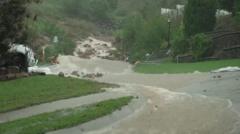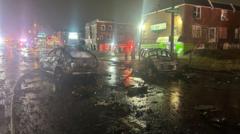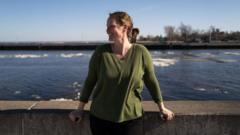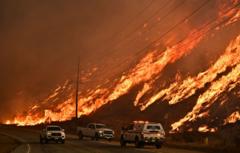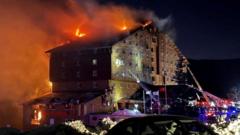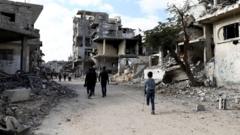**The death toll from the flash floods in Valencia is over 200, with multiple factors cited including geography, complacency, and infrastructure issues.**
**Valencia Floods: An In-Depth Look at the Deadly Disaster**

**Valencia Floods: An In-Depth Look at the Deadly Disaster**
**How poor planning, extreme weather, and climate change exacerbated Valencia's devastating floods**
The recent flash floods that engulfed the Valencia region of Spain have resulted in a staggering death toll exceeding 200, raising urgent questions about the causes behind this unprecedented disaster. The town of Paiporta, with a population of 25,000, emerged as one of the hardest-hit areas, reporting at least 62 fatalities.
Several interlinked factors have been implicated in the catastrophe, including individuals trapped in vehicles, negligence from local authorities, and extreme rainfall intensified by climate change. The regional civil protection agency issued an emergency alert to residents in Valencia around 8:00 PM local time, just as floodwaters began to rise perilously in multiple neighborhoods.
Eyewitness accounts reveal that the deluge swept through Paiporta while vehicles were still being driven, leading to tragic outcomes. Despite heavier rainfall in other regions like Utiel and Chiva, Paiporta's specific geographic conditions, including a central ravine, amplified the flooding's severity. Mayor Maribel Albalat admitted that the town’s preparedness was lacking, with numerous ground-level apartments susceptible to the flooding.
Complacency also seems to have played a role; as stated by Albalat, previous minimal flooding events led many to underestimate potential risks. "In Paiporta, we don’t tend to have floods and people aren’t afraid," she noted. Additionally, the situation worsened in garages, which became lethal traps as residents attempted to save their cars before being engulfed by water. A tragic discovery was made in the La Torre neighborhood, where seven victims were found in the flooded basement of a residential building.
The A3 motorway, a vital route connecting Valencia to Madrid, also witnessed many motorists caught off-guard as water levels rose. Stories from survivors detail the chaos, with some unsure whether to remain in their cars or attempt to flee, raising alarming questions about emergency response options during such rapid crises.
Furthermore, local officials warned that unaccounted vehicles could contain additional victims, underscoring the continuing search and recovery efforts. Solutions proposed included creating awareness regarding escape options from vehicles during floods, reinforcing safety measures in high-risk areas, and improving infrastructure capable of handling sudden deluge.
Geographically, the most affected areas boast significant population density, and previous lower rainfall has rendered the soil incapable of effectively absorbing new water. Researcher Pablo Aznar highlighted how extensive urbanization has resulted in the prevalence of impermeable surfaces, exacerbating flood risks.
The weigh of climate change cannot be dismissed either. A preliminary report from World Weather Attribution provides evidence that rainfall intensity was 12% greater due to climate change, which has made such severe weather events increasingly probable.
As communities cope with the aftermath of this disaster, the necessity for reevaluating urban planning and climate resilience strategies becomes more urgent than ever. The events in Valencia should serve as a crucial lesson in hazard preparedness and adaptation, as regions around the world face similar challenges ahead.

